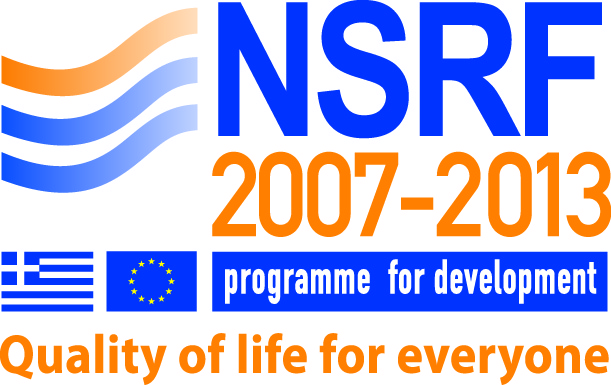Please use this identifier to cite or link to this item:
https://olympias.lib.uoi.gr/jspui/handle/123456789/39585Full metadata record
| DC Field | Value | Language |
|---|---|---|
| dc.contributor.author | Τόλη, Φρειδερίκη | el |
| dc.contributor.author | Αργυρού, Ανδριάνα Ναυσικά | el |
| dc.date.accessioned | 2025-10-30T06:52:12Z | - |
| dc.date.available | 2025-10-30T06:52:12Z | - |
| dc.identifier.uri | https://olympias.lib.uoi.gr/jspui/handle/123456789/39585 | - |
| dc.rights | Attribution-NonCommercial-NoDerivs 3.0 United States | * |
| dc.rights.uri | http://creativecommons.org/licenses/by-nc-nd/3.0/us/ | * |
| dc.subject | Διαταραχές κατάποσης | el |
| dc.subject | Νευρομυϊκή ηλεκτρική διέγερση | el |
| dc.subject | Διακρανιακή ηλεκτρική διέγερση | el |
| dc.subject | Νευροπλαστικότητα | el |
| dc.subject | Εγκεφαλικό επεισόδιο | el |
| dc.subject | Swallowing disorders | en |
| dc.subject | Transcranial Direct Current Stimulation | en |
| dc.subject | Neuroplasticity | en |
| dc.subject | Stroke | en |
| dc.title | Διαχείριση της δυσφαγίας μετά από ΑΕΕ. Ο ρόλος της νευροτροποποίησης. | el |
| dc.title | Management of post-stroke dysphagia. The role of neuromodulation. | en |
| heal.type | bachelorThesis | el |
| heal.type.en | Bachelor thesis | en |
| heal.type.el | Προπτυχιακή/Διπλωματική εργασία | el |
| heal.classification | Δυσφαγία | el |
| heal.classification | Dysphagia | en |
| heal.dateAvailable | 2025-10-30T06:53:15Z | - |
| heal.language | el | el |
| heal.access | free | el |
| heal.recordProvider | Πανεπιστήμιο Ιωαννίνων. Σχολή Επιστημών Υγείας. Τμήμα Λογοθεραπείας | el |
| heal.publicationDate | 2025-09 | - |
| heal.bibliographicCitation | APA | |
| heal.abstract | Ο Διακρανιακός Μαγνητικός Ερεθισμός Συνεχούς Ρεύματος (tDCS) αποτελεί μια μη επεμβατική τεχνική νευροτροποποίησης που στοχεύει στην ενίσχυση της νευροπλαστικότητας και την αποκατάσταση λειτουργιών μετά από νευρολογικές βλάβες. Μια από τις επιπτώσεις του Αγγειακού Εγκεφαλικού Επεισοδίου (AEE) είναι η δυσφαγία, δηλαδή η μερική ή πλήρης δυσκολία κατάποσης, που επηρεάζει την ποιότητα ζωής των ασθενών και αυξάνει τον κίνδυνο εισρόφησης και πνευμονίας. Σκοπός της παρούσας βιβλιογραφικής πτυχιακής εργασίας ήταν να συγκεντρωθούν όσο το δυνατόν περισσότερα πρόσφατα επιστημονικά άρθρα που αξιολογούν την αποτελεσματικότητα του tDCS στη δυσφαγία μετά από ΑΕΕ. Το tDCS φαίνεται να βελτιώνει τη λειτουργία της κατάποσης μέσω ήπιων ηλεκτρικών κυμάτων, με παραμέτρους εφαρμογής όπως ένταση περίπου 2 mA, διάρκεια 20-30 λεπτά και 10-30 συνεδρίες, ενώ τα ηλεκτρόδια τοποθετούνται συχνότερα στον DLPFC ή στον κινητικό φλοιό. Η χρήση του tDCS σε συνδυασμό με παραδοσιακή θεραπεία δυσφαγίας, όπως οι ασκήσεις κατάποσης και η λογοθεραπεία, επιδεικνύει τα πιο ενθαρρυντικά αποτελέσματα. Παρότι η τεχνική είναι ασφαλής και καλά ανεκτή, οι υπάρχουσες μελέτες περιορίζονται από μικρά δείγματα, ετερογενή πρωτόκολλα και περιορισμένη παρακολούθηση, γεγονός που υποδηλώνει την ανάγκη για μεγαλύτερες και τυποποιημένες κλινικές έρευνες. Συμπερασματικά, το tDCS αποτελεί μια πολλά υποσχόμενη συμπληρωματική μέθοδο αποκατάστασης της δυσφαγίας μετά από ΑΕΕ, με τη μεγαλύτερη αποτελεσματικότητα να επιτυγχάνεται όταν συνδυάζεται με κλασσικές θεραπευτικές παρεμβάσεις. | el |
| heal.abstract | Transcranial direct current stimulation (tDCS) is a non-invasive neuromodulation technique aimed at enhancing neuroplasticity and restoring functions following neurological damage. One of the consequences of cerebrovascular stroke (CVS) is dysphagia, which refers to partial or complete difficulty in swallowing, affecting patients quality of life and increasing the risk of aspiration and pneumonia. The aim of thiw literature review was to gather as many recent scientific articles as possible evaluating the effectiveness of tDCS in post-stroke dysphagia. TDCS appears to improve swallowing function through mild electrical currents, with application parameters such as an intensity of approximately 2 mA, a duration of 20-30 minutes, and 10-30 sessions, while electrodes are most commonly placed on the dorsolateral prefrontal cortex (DLPFC) or the primary motor cortex. The use of tDCS in combination with traditional dysphagia therapy, such as swallowing exercises and speech therapy, shows the most encouraging results. Although the technique is safe and well-tolerated, existing studies are limited by small sample sizes, heterogeneous protocols, and limited follow-up, indicating the need for larger and standardized clinical trials. In conclusion, tDCS represents a highly promising complementary method foe the rehabilitation of post-stroke dysphagia, with the greatest effectiveness achieved when combined with conventional therapeutic interventions. | en |
| heal.advisorName | Νάσιος, Γρηγόριος | el |
| heal.committeeMemberName | Ζιάβρα, Ναυσικά | el |
| heal.committeeMemberName | Ζακοπούλου, Βικτώρια | el |
| heal.academicPublisher | Τμήμα Λογοθεραπείας | el |
| heal.academicPublisherID | uoi | el |
| heal.numberOfPages | 103 σ. | el |
| heal.fullTextAvailability | true | - |
| Appears in Collections: | Πτυχιακές Εργασίες Προπτυχιακών Φοιτητών | |
Files in This Item:
| File | Description | Size | Format | |
|---|---|---|---|---|
| Πτυχιακή Εργασία - Αργυρού Ανδριάνα Ναυσικα 1213 και Τόλη Φρειδερίκη 1322.pdf | 1.4 MB | Adobe PDF | View/Open |
This item is licensed under a Creative Commons License





